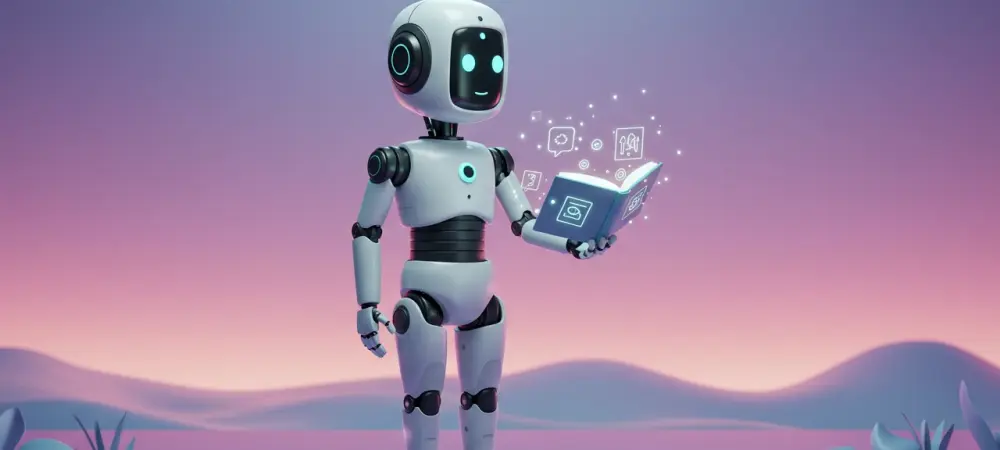In the rapidly evolving world of digital entertainment, experts like Dominic Jainy are at the forefront of driving innovation through technology. With a solid background in artificial intelligence, machine learning, and blockchain, Dominic explores the ongoing transformation that character AI chats bring to digital storytelling, evolving them into full-fledged AI shows. This interview delves into the implications of these advancements, exploring themes such as user engagement, production innovation, and the future of AI storytelling.
Can you explain what Character AI is and how it has evolved into creating full-fledged AI shows?
Character AI started as simulated conversations with AI-generated personas. Over time, it evolved by leveraging interactions to generate compelling storylines, transitioning from text-based chats to fully scripted, voiced, and animated productions. This evolution has become a new form of digital storytelling, transforming simple conversations into immersive entertainment experiences.
How do Character AI chats differ from traditional media formats?
Unlike traditional media, which offers a passive consumption experience, Character AI chats foster interaction. They involve users in the narrative process, allowing the storyline to adapt and evolve based on viewer input. This deepens engagement and creates a personalized journey, something traditional formats typically lack.
What role do users play in interacting with and influencing AI characters?
Users have a significant role, as their interactions guide character development and plot arcs. By engaging in conversations with AI characters, users help shape the narrative, making the storytelling experience interactive. This creates a sense of ownership and attachment to the characters and stories they influence.
Could you elaborate on the process of turning AI chats into fully scripted shows?
The journey from chat to show involves using huge data sets from millions of interactions to build storylines. Creators employ generative AI tools for producing dialogue, voiceovers, and visuals, crafting fully formed episodes from raw conversational data. This method allows for dynamic and scalable content generation that adapts to user involvement.
What generative AI tools are used to create dialogue, voiceovers, visuals, and editing in AI shows?
Tools like GPT-4 are crucial for generating realistic dialogue, while voice cloning technologies provide varied and nuanced vocal expressions. Visuals and animation are created using platforms like Sora by OpenAI and Inworld AI, which enable the design of scenes and characters. Together, these tools streamline the production of AI-driven content.
How do platforms like Sora by OpenAI and Inworld AI facilitate the creation of AI shows?
These platforms provide the essential infrastructure for developing AI shows, from character design to animation. They offer creators the resources to design engaging scenes and animate characters effectively, allowing for seamless integration of AI-generated content into full-fledged entertainment formats.
What are the benefits of AI shows in terms of production costs and accessibility?
AI shows significantly reduce production costs by centralizing resources into a single toolset. They allow individuals or small teams to produce high-quality content without the need for large crews or budgets. This democratization of storytelling opens doors to diverse voices and widens accessibility for creators and audiences alike.
How do AI models like GPT-4 and voice cloning tools contribute to the creation of AI shows?
GPT-4 assists in creating coherent and contextually relevant dialogue, enhancing narrative depth and engagement. Voice cloning tools add another layer by providing authentic-sounding voiceovers that can range widely in tone and emotion, further enriching the viewing experience and making AI characters feel more lifelike.
What is the novelty factor associated with AI shows, and why do people find them appealing?
AI shows captivate audiences with their novelty, as they offer stories crafted by interactions rather than traditional writing. This innovative approach creates a unique appeal, attracting viewers who enjoy seeing the dynamic outcomes of user-led narratives and the technological prowess behind these productions.
What challenges do creators face in maintaining consistency and logic in AI-generated storylines?
AI-generated stories can sometimes lack consistency, leading to plot incongruities or logical gaps. Maintaining storyline coherence requires careful curation and often supplementary human input to guide narrative threads. Achieving balance between AI innovation and cohesive storytelling remains a significant challenge for creators.
How do you see the future of AI storytelling evolving, and what trends should we expect to see?
AI storytelling is likely to continue evolving with advancements in AI comprehension and emotional intelligence. We can expect more sophisticated narratives and characters with deeper emotional resonance. Additionally, increased collaboration between creators and AI will refine storytelling methods, making AI-generated content more mainstream and culturally influential.

